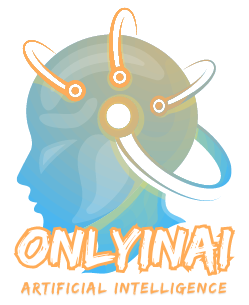Did you know AI is becoming a big worry in military tech? Experts talk about the dangers of autonomous weapons and AI-powered cyberattacks. Recently, drones, likely guided by AI, went deep into Russian territory and hit key targets. This shows how AI can be used as a weapon.
As AI gets better, it’s making us worry more about our safety and the world’s peace. We’re talking about “killer robots” that pick and attack targets on their own. There are also AI tools for hacking and fake videos for spreading lies. In this article, we’ll look at the top ways AI can be used as a weapon. We’ll see why we need to act fast to stop these threats.
Key Takeaways
- The use of AI in military tech is a growing worry, with experts warning about the dangers.
- Autonomous weapon systems like “killer robots” that attack without human help are a big threat.
- AI is changing how we manage military operations, keep things running, and gather intel. It has both good and bad sides for defense.
- AI can be used for cyberattacks, spreading fake news, and social and psychological warfare.
- We need to deal with AI weapon threats to keep the world safe and stable.
Autonomous Weapon Systems and Killer Robots
Technology has brought us machines that can pick targets on their own. These machines, known as autonomous weapon systems (AWS), or “killer robots,” work without human control. They decide when to use deadly force.
One big worry is that these machines can’t tell enemies from innocent people. This goes against the “discrimination principle” in just war theories. It makes us question if these systems should be used at all, as they could harm innocent lives.
Lethal Autonomous Weapons and AWS
The creation of lethal autonomous weapon systems (LAWS) is very concerning. Military research on these is often kept secret from the public. This secrecy makes it hard to understand the risks to citizens. We remember how chemical weapons were once seen as progress but are now banned, showing the dangers of unchecked tech.
| Autonomous Weapon Systems | Killer Robots | Lethal Autonomous Weapon Systems |
|---|---|---|
| Robotic systems capable of autonomously selecting and attacking targets | Another term for autonomous weapon systems | Autonomous weapon systems capable of using lethal force |
| Raise concerns about the “discrimination principle” of just war theories | Cannot reliably distinguish between combatants and civilians | Ongoing military research often shielded from public scrutiny |
The rise of autonomous weapon systems marks a big change in warfare. It calls for careful thought and action to handle these new technologies right. As citizens, we need to keep an eye on the debate about their ethics, laws, and impact on society.
Drone Swarms and Coordinated AI Attacks
Drone swarms and coordinated AI attacks are becoming a big worry in modern warfare. Picture this: thousands of drones work together, forming complex patterns and taking down enemy defenses on their own. This isn’t just a dream, but a real idea that military forces are looking into.
In 2013, the United States Strategic Capabilities Office did a bold test. They launched 103 Perdix drones that showed they could work together and act on their own. This test showed how drone swarms could be a powerful, new kind of “nuclear device.” Experts say these technologies are getting better, making the threat of drone attacks and AI attacks a big worry for the world.
The making of autonomous weapon systems and killer robots is a hot topic, with many arguing about its right and wrong sides. But, these technologies are being made by military groups all over the world. They see the big benefits they could bring. As drone swarms and coordinated AI attacks get better, the world must figure out how to deal with this new threat. We need to make sure these powerful tools are used right and don’t cause huge problems.
Top ways AI can be used as a weapon
Today, the use of artificial intelligence (AI) as a weapon is a growing worry. From autonomous weapon systems to AI-powered cyberattacks, the ways AI can be used are alarming. They are also thought-provoking.
- Autonomous Weapon Systems and Killer Robots: Lethal autonomous weapon systems (LAWS), or “killer robots,” can decide when to take life without human help. This is a big threat.
- Drone Swarms and Coordinated AI Attacks: AI-powered drones can work together and overwhelm targets. They are a powerful force in today’s wars.
- AI-Powered Cyberattacks and Hacking: AI can launch complex cyberattacks that get past usual security. This is a big worry for cybersecurity experts.
- Deep Fakes and Disinformation Campaigns: AI can make fake videos and audio that look real. This can spread false information easily.
- AI Surveillance and Tracking: AI can track people and follow their steps. It can also gather a lot of information, which is a threat to privacy.
- AI-Driven Social Engineering and Psychological Warfare: AI can use people’s weaknesses to control emotions and change opinions. This is done through targeted messages and psychological tactics.
- AI-Augmented Biological and Chemical Weapons: AI can help make biological and chemical weapons more deadly and accurate. This is a big concern.
- Intelligent Command and Control Systems: AI can make military operations run smoother and help with decisions. But, it also brings new risks and vulnerabilities.
- Predictive Maintenance and Logistics Optimization: AI can make military logistics and maintenance more efficient. But, these systems can also be targeted, causing big problems.
- AI-Powered Intelligence and Surveillance: AI can gather and analyze intelligence, giving valuable insights. But, it also raises concerns about privacy and the misuse of data.
We need to be careful as we face these new AI threats. It’s important for policymakers, military leaders, and everyone to talk about how to use AI responsibly. This will help us make the right choices with this powerful technology.
AI-Powered Cyberattacks and Hacking

In today’s world, the defense sector faces a big threat from ai-powered cyberattacks. Our digital systems and networks are getting more advanced but also more vulnerable to hacking. AI is key in fighting these threats and can also be used by bad actors to attack us.
Machine learning algorithms can now look at network traffic, find weak spots, and stop cybersecurity threats fast. But, these same AI tools can also be used by hackers to get past our defenses and into secure networks.
Adversarial Hacking and Cybersecurity Threats
The threat of AI-powered cyberattacks is real and the European AI Act tries to tackle these risks. As we depend more on digital systems, we must always be on the lookout for new cybersecurity threats.
| Cybersecurity Threat | Description | Potential Impact |
|---|---|---|
| Adversarial Hacking | AI-powered systems trained to bypass security measures and infiltrate networks | Unauthorized access, data breaches, system disruption |
| AI-Powered Malware | Malware that uses AI algorithms to adapt and evade detection | Widespread infection, data theft, system compromise |
| AI-Enabled Social Engineering | AI used to manipulate and exploit human vulnerabilities | Phishing, identity theft, financial fraud |
Deep Fakes and Disinformation Campaigns
In today’s digital world, AI-powered “deep fakes” are a big worry. These fake audio, images, and videos look real but aren’t. They can be used by bad people to spread lies and hurt trust in news and leaders.
AI-powered propaganda and social media manipulation are big threats to our information. Governments and security teams are fighting to stop these deep fakes. They aim to stop fake news and psychological attacks.
As AI gets better, making fake media will be easier. We must be careful and have strong plans to fight this danger. We need to make sure the truth wins against lies.
We can fight against AI-powered propaganda by staying informed and working together. Let’s build a digital world that stands up to fake news. We must keep truth and transparency alive.
AI Surveillance and Tracking

The world of spying and gathering information is changing fast, thanks to AI. Now, advanced computer vision helps analyze lots of images and videos. This helps spot targets, track them, and recognize objects. AI also looks through huge amounts of data from places like social media to find important info.
This new AI-powered spying and tracking is changing everything. AI can handle and understand data much more than humans can. This means it can help track people and groups better. It’s changing how agencies and police work, helping them spot and follow suspicious actions.
| AI Surveillance Capabilities | Benefits |
|---|---|
| Computer Vision | Enables the analysis of vast amounts of imagery and video data for target identification and tracking |
| Data Analytics | Sifts through enormous amounts of data from various sources, including social media, to extract relevant information and enhance situational awareness |
| Autonomous Tracking | Allows for the continuous monitoring and tracking of individuals and groups, far exceeding human capabilities |
As AI in surveillance and tracking gets better, it’s changing how we gather intelligence and enforce laws. These new tools could make us safer, but they also bring up big questions about privacy and ethics. We need to think hard about these issues.
AI-Driven Social Engineering and Psychological Warfare
AI has become a key tool for those who want to use human weaknesses. It helps create targeted attacks on people’s minds. This makes it easier for bad actors to shape human behavior.
AI looks at huge amounts of data to understand how people think and decide. This info helps make messages and tactics that can weaken morale and confuse people. It also makes it harder for leaders to make good choices.
Exploiting Human Vulnerability with AI
AI in psychological warfare is very scary. It can find and use human weaknesses to make fake stories and spread lies. This can make people doubt each other, change opinions, and affect big decisions.
We need to fight this with strong AI tools that can spot and fight back against these tactics. It’s important for leaders and everyone to stay alert and protect against AI misuse.
| Threat | Impact | Countermeasures |
|---|---|---|
| AI-driven social engineering | Manipulation of human behavior and decision-making | Robust AI-driven decision support systems, public awareness campaigns |
| AI-enabled psychological warfare | Erosion of trust, manipulation of public opinion, influence on critical decision-making | Countering disinformation campaigns, strengthening media literacy, improving cybersecurity |
| Exploiting human vulnerability with AI | Undermining morale, sowing discord, compromising decision-making abilities | Developing resilience against psychological manipulation, fostering critical thinking |
AI-Augmented Biological and Chemical Weapons
AI’s potential to be used as a weapon is worrying. It’s especially true for biological and chemical weapons. With new tech in making chemicals and AI help, we could see autonomous CBRN weapons. These could include tiny insect drones that spread deadly substances.
The idea of ai-augmented biological weapons and ai-augmented chemical weapons is scary. They could be hard to spot, track, or defend against. This makes them a big threat to us all.
Right now, laws don’t cover this new threat well. This shows we need quick action from leaders, experts, and everyone. As AI gets better, we must create strong rules to stop these dangers.
Creating AI-powered weapons of mass destruction is a serious issue. We need to act fast and work together worldwide. By being aware and taking steps now, we can lessen the risks. This helps protect us from the harm of ai-augmented biological and chemical weapons.
Intelligent Command and Control Systems
Artificial intelligence (AI) is changing how we manage command and control systems. These systems now use AI for real-time data analysis and decision-making. AI-driven systems can handle more data and analyze it faster than humans. This lets them make decisions based on many factors.
Soon, AI will help humans by making simple tasks easier and giving them important data. But, as AI becomes more independent, there are worries about it making big decisions alone. This could lead to ethical issues and unexpected problems, since AI might not understand complex situations fully.
Intelligent command and control systems using AI are changing how we plan missions and use resources. AI helps businesses and military groups look at huge amounts of data. It finds patterns and makes better choices, making them more efficient and effective.
| Feature | Benefit |
|---|---|
| Real-time data analysis | Faster decision-making and enhanced situational awareness |
| Automated task processing | Streamlined operations and reduced human error |
| Predictive analytics | Improved resource allocation and mission planning |
As AI advances in command and control systems, we must balance its benefits with ethical concerns. By carefully adding AI to these systems, we can use its power. At the same time, we keep human oversight and decision-making key.
Conclusion
Reflecting on how AI can be used as a weapon, I feel a huge responsibility. We must shape the future of this powerful technology. AI could bring about amazing things in the military, like autonomous weapons and coordinated drone attacks.
AI can greatly improve cybersecurity, command, and intelligence gathering. But, we can’t ignore the risk of it being used for harm. The ethical worries about AI weapons, like losing human control and unpredictable systems, are very real.
We need strong laws and policies to control AI in the military. It’s important to keep moving forward with both technology and our values in mind. This way, we can make sure progress is responsible and good for everyone.


